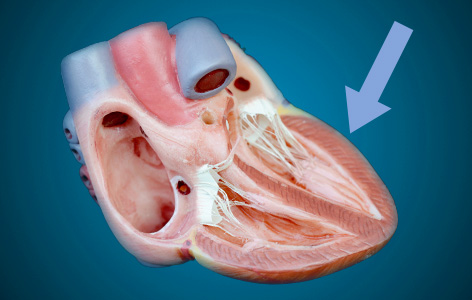
Diseases that weaken the ability of muscles of the heart to contract are known as cardiomyopathies. One of these diseases, known as familial dilated cardiomyopathy, is an inherited condition in which the muscles of the heart become dangerously stretched out, leading to heart failure. Some people with this disease have been found to have defects in a protein known as phospholamban (PLN), which is involved muscle contraction.
Muscle contraction involves a series of complex molecular events and is a process that depends on calcium. Myofilaments—the microscopic fibres found within muscle cells—respond to changes in calcium levels in the cell. When calcium levels are high, muscles contract; when they are low, muscles relax.
PLN has been shown to decrease the robustness of muscle contractions by reducing the amount of calcium that is available for muscle contraction. Despite the importance of PLN, little is known about how the cell controls levels of the protein.
To help shed light on PLN regulation, a group of researchers led by TGHRI Scientist Dr. Anthony Gramolini explored the detailed steps taken by cells to break down PLN. "We found that PLN is chemically tagged by ubiquitin, which targets a protein to be broken down through a process known as selective autophagy." says Dr. Gramolini.
Also explored were the effects of a drug known as metformin, which is the most widely used drug for type II diabetes. Dr. Gramolini explains, "We found that metformin promotes degradation of PLN. Because certain experimental models have shown that metformin has a cardioprotective effect, our findings suggest that by reducing PLN, metformin may act by increasing the amount of calcium available to myofilaments in the heart."
Supported by the Heart and Stroke Foundation, the Heart and Stroke/Richard Lewar Centre of Excellence, the Canadian Institutes of Health Research, the Ontario Research Fund and the Toronto General & Western Hospital Foundation. AOG is a Tier 2 Canada Research Chair in Cardiovascular Proteomics and Molecular Therapeutics.
Metformin increases degradation of phospholamban via autophagy in cardiomyocytes. Teng AC, Miyake T, Yokoe S, Zhang L, Rezende LM Jr, Sharma P, MacLennan DH, Liu PP, Gramolini AO. Proc Natl Acad Sci U S A. 2015 May 26. [Pubmed abstract]




